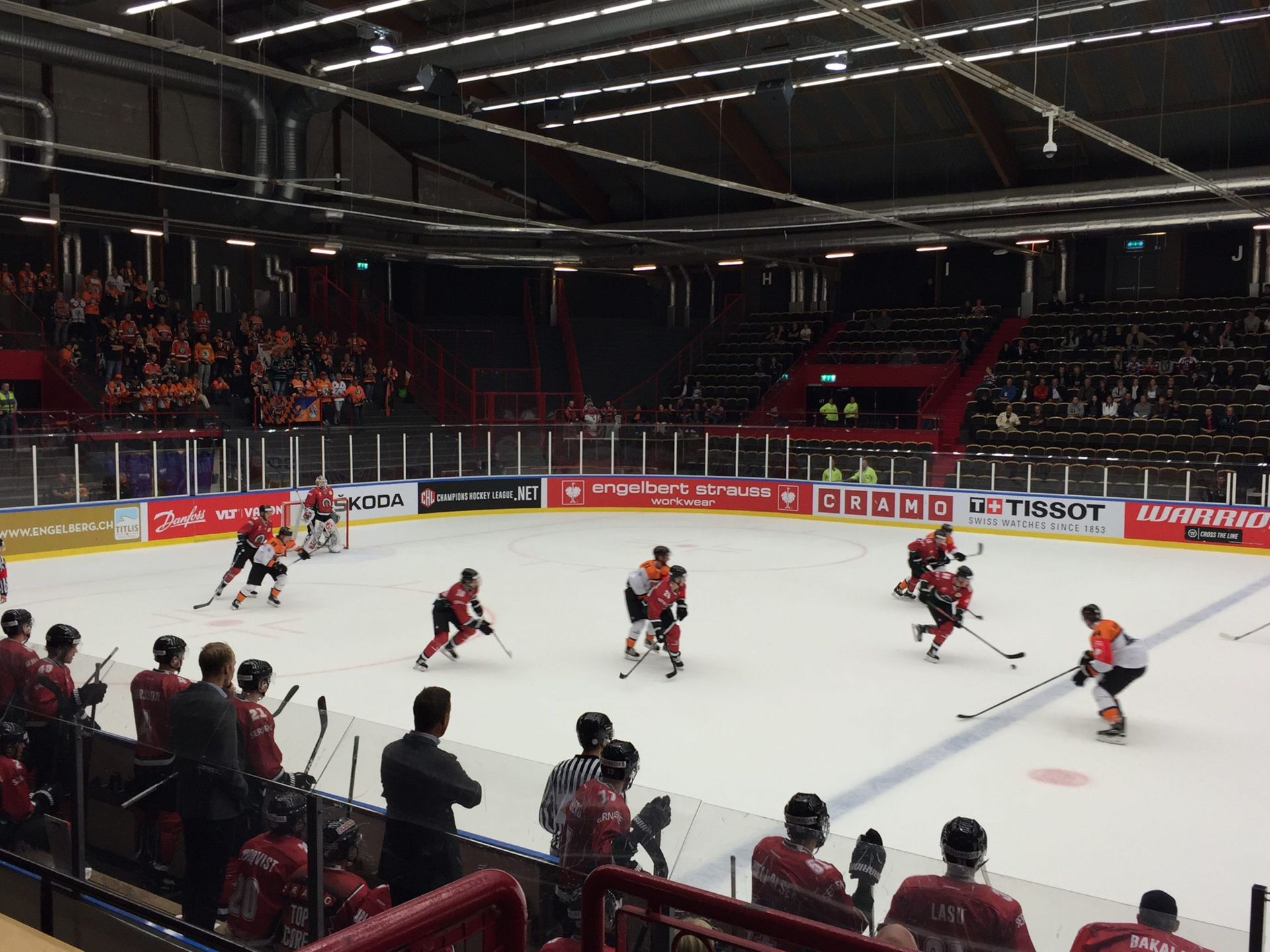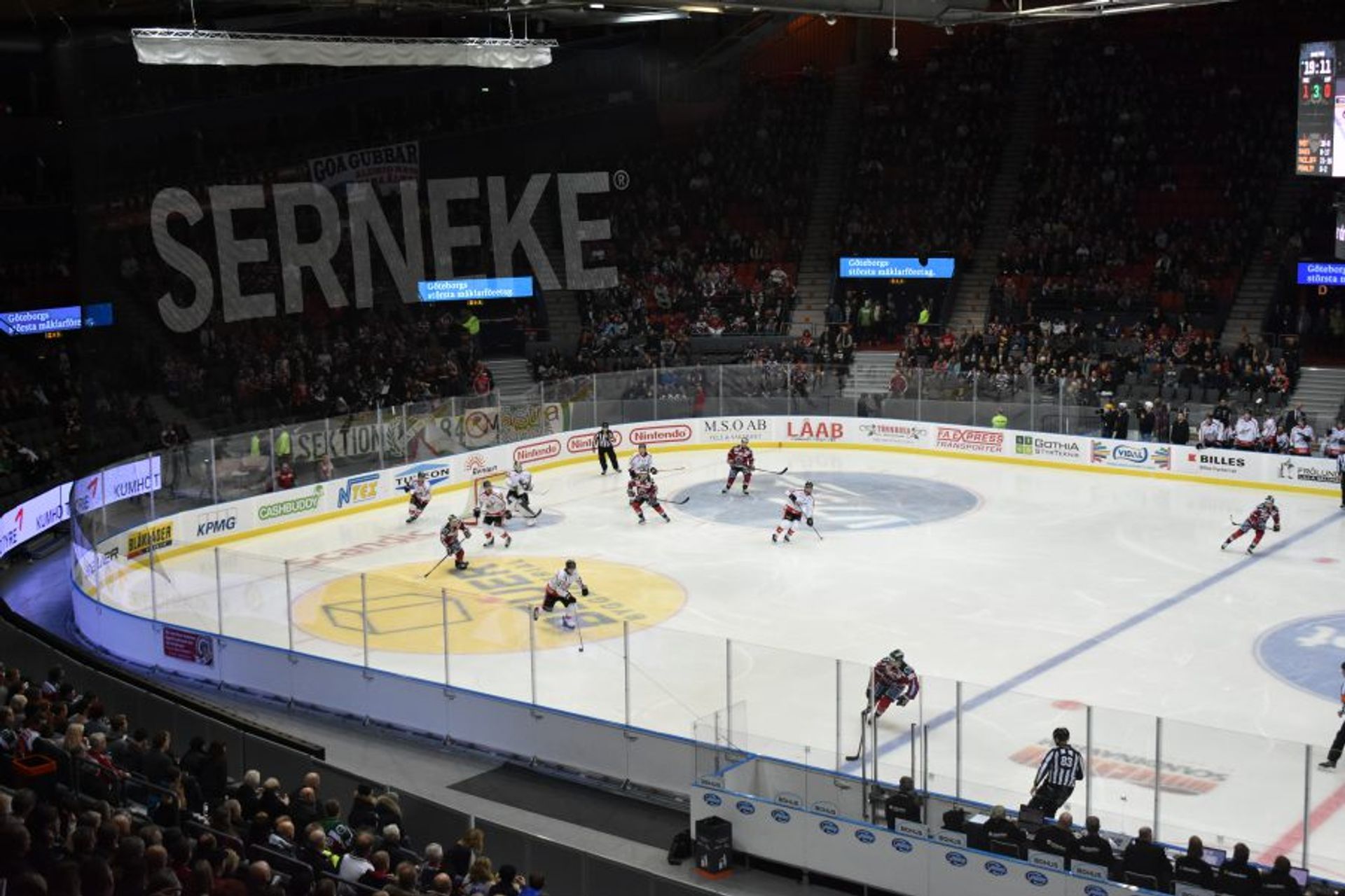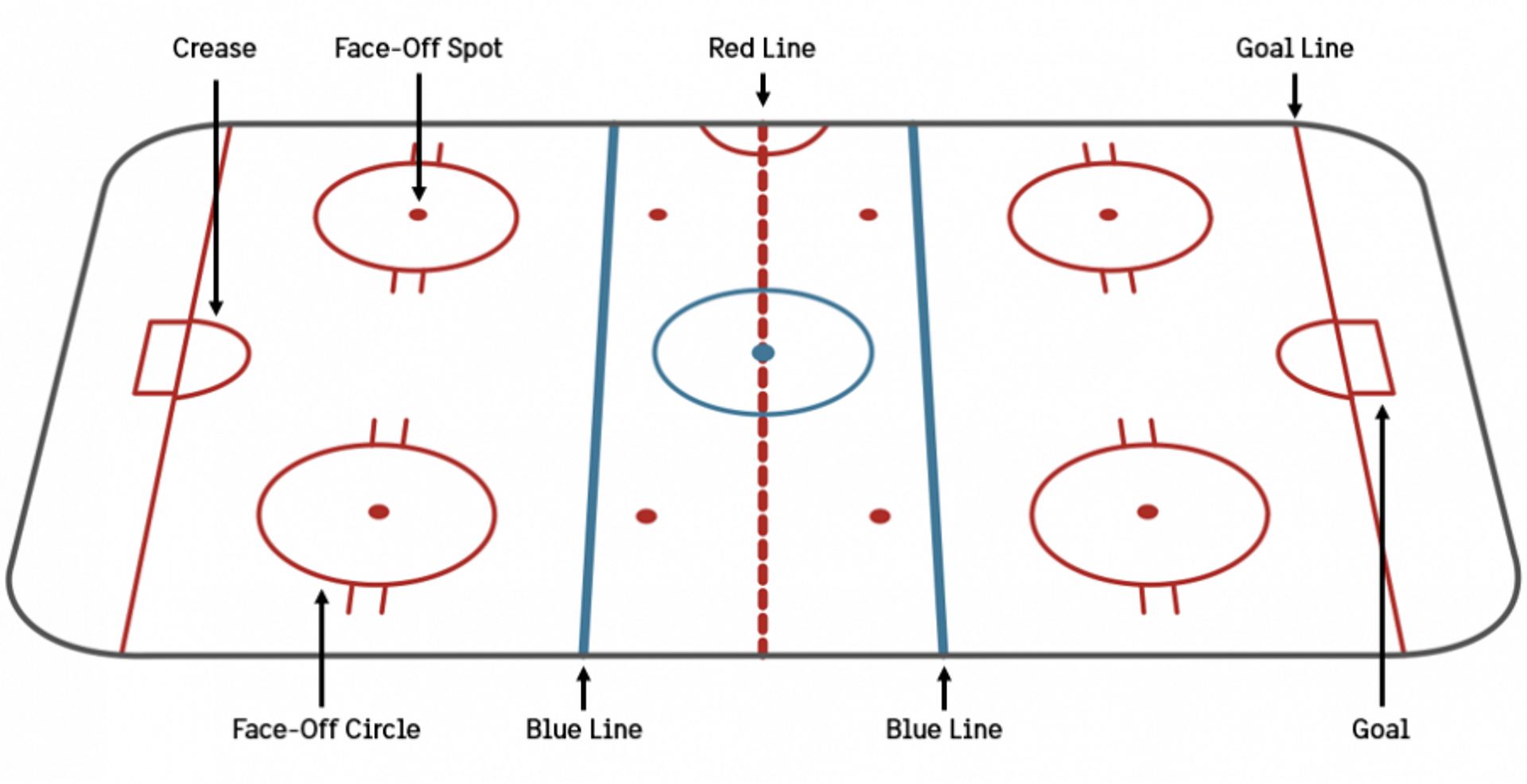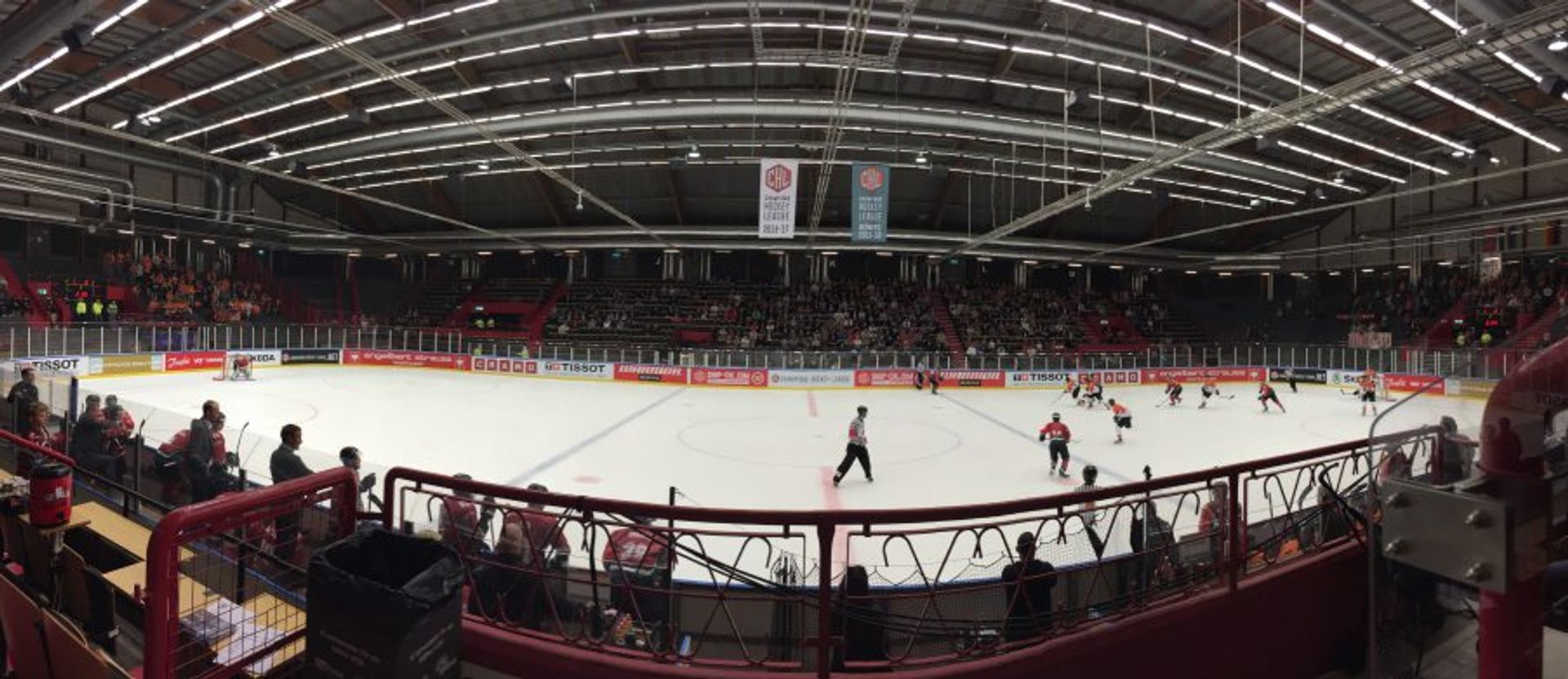
Written by Andrés
20 Dec 2016
If you are like me probably you have absolutely no idea of how to play ice hockey, so for now let’s assume that you’ve heard or at least watched a picture/video of someone playing ice hockey, if you haven’t my guess is that you are 200 years old.
Ice hockey is a very complex game and it is easy to feel lost with so many rules and so much action going on in the rink. So, this is what I have learn in the past months combined with a bit of research.

The hockey rink
The rink is 60,96 meters (200 feet) long and 25,90 meters wide (85 feet), depending on the competition and the league the size of the rink can vary. The rink is divided in half by a red line, and it has two blue lines, five face-off circles, the goals and last but not least; the creases. Checkout my mad paint skills in the diagram below.

The players
Now, let’s move on to the players and the positions. An ice hockey team consists of six players, each one with a different and specific position. Just as you thought, the objective of the offense is to score goals and the defense is to prevent the opponents from scoring goals. A regular team consists of 20 players and 2 goalies, The list below describes a bit each position:
- Goalie: It is as simple as keeping the puck out of the net, although some people have told me that it is the most challenging position to play.
- : Normally a team has two defenders, one on the left and the other one on the right. There are different kinds of defenders, depending on their style they can be more offensive defenders, or more tactical.
- He works on the right side of the ice rink, just as the position name suggested it. While attacking, he is responsible for the other team’s left defender. Also, he works the cornertrying to pass the puck to someone with a better chance of scoring.
- Just like the right wing but in the left side of the ice rink, normally the player in this position is left-handed but nowadays there are also right-handed players in this position.
- He commands the team in both sides of the rink, usually is someone good at face-offs and with good passing skills.

The equipment
Hockey is a full contact sport, or at least that is the rule in men’s hockey (I don’t know about women’s hockey), a part from the jersey, pants, gloves, skates and stick, protective equipment is mandatory and is enforced in all competitions, in my experience the puck moves quite fast, and it looks a bit heavy (haven’t had one in my hands) so imagine something heavy, going your way at 150 km/h that is NO BUENO (FYI this is complete grammatically wrong Spanish). The protective equipment includes a helmet (if the players are under certain age they have a cage or a plastic visor), shoulder pads, elbow pads, mouth guard, protective gloves, padded shorts, shin pads, and neck protector (if the player wants wo wear one).
The basic rules
There are a lot of rules to explain, but I don’t want to make this way to complicated. So here are the basic 3 rules:
- Offsides: When any player of the attacking team precedes the puck over the defending team’s blue line.
- Offside (or two-line) pass: When a player passes the puck from his defending zone to a teammate beyond the red center line.
- Icing: When a player shoots the puck across the center red line and past the opposing red goal line. Icing is not called if the player’s team is killing a penalty, a teammate of the player shooting the puck touches it before a player from the opposing team, the defending goalie touches the puck first or if the puck travels through the crease (semicircle of blue paint at the “mouth” of the goal) on its way to the red line.

Ice hockey is THE sport in Sweden, I’m more of a football fan but I think that I’m starting to like more and more ice hockey, especially after going to a couple of matches and feeling the intensity. Hopefully now you know a bit more about ice hockey!






